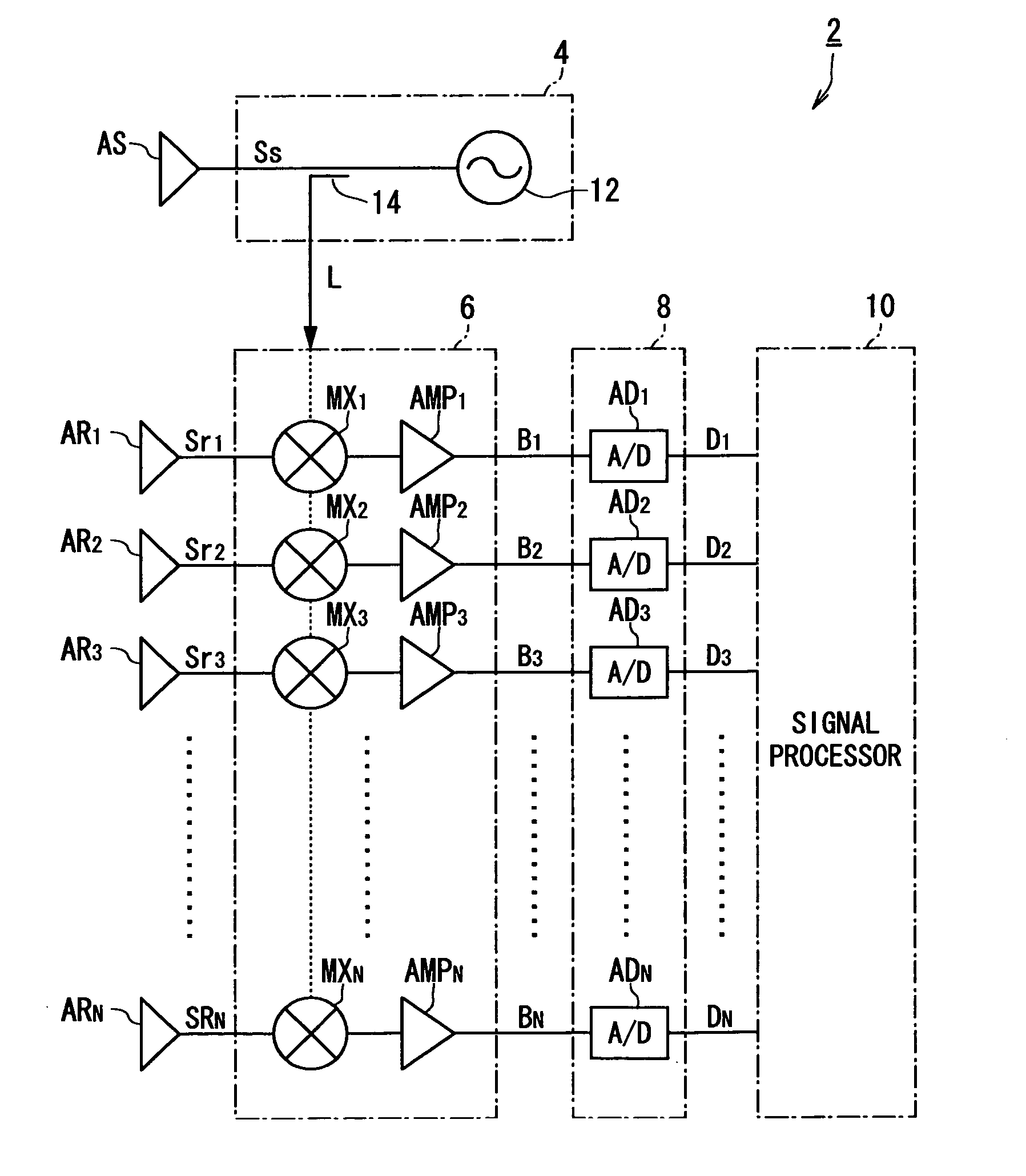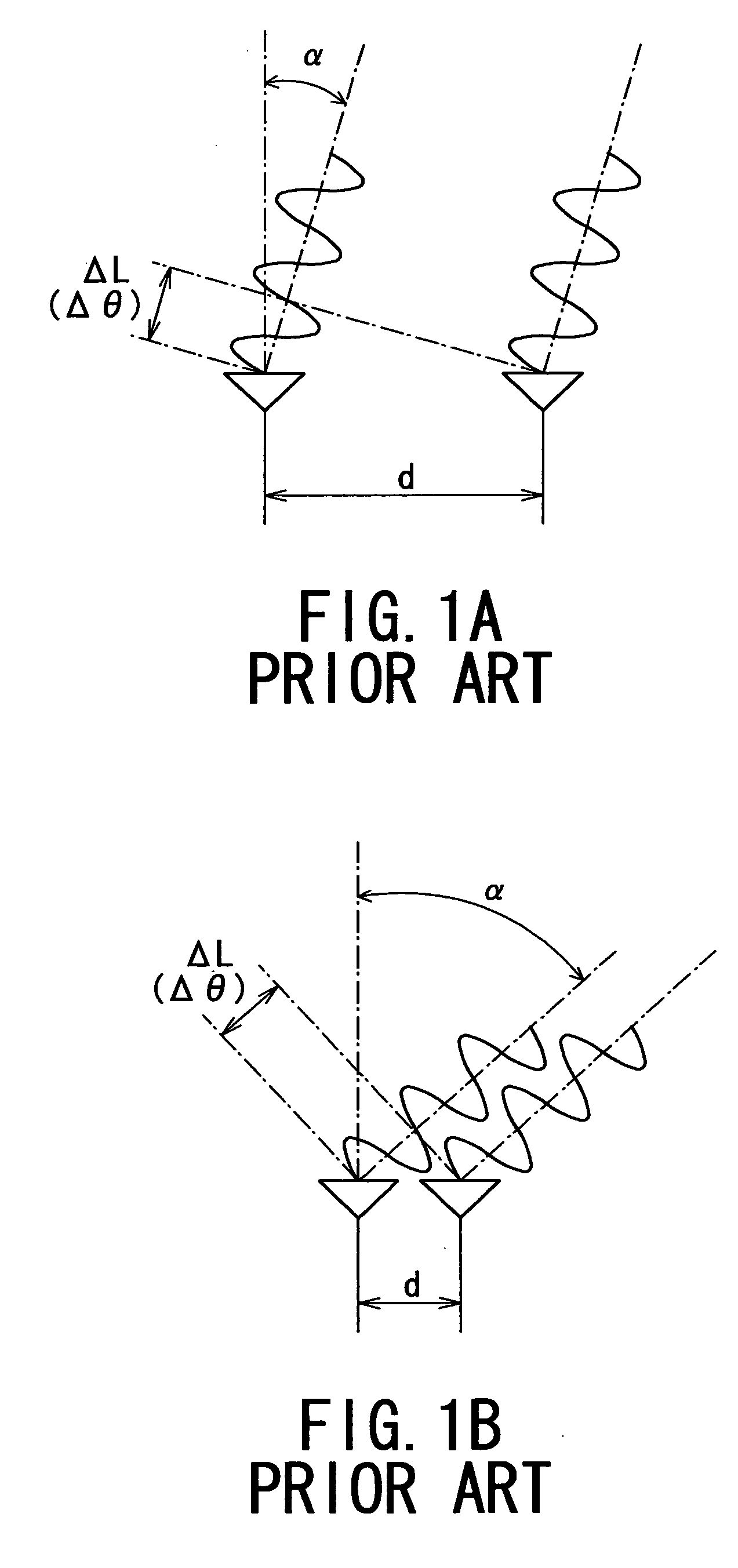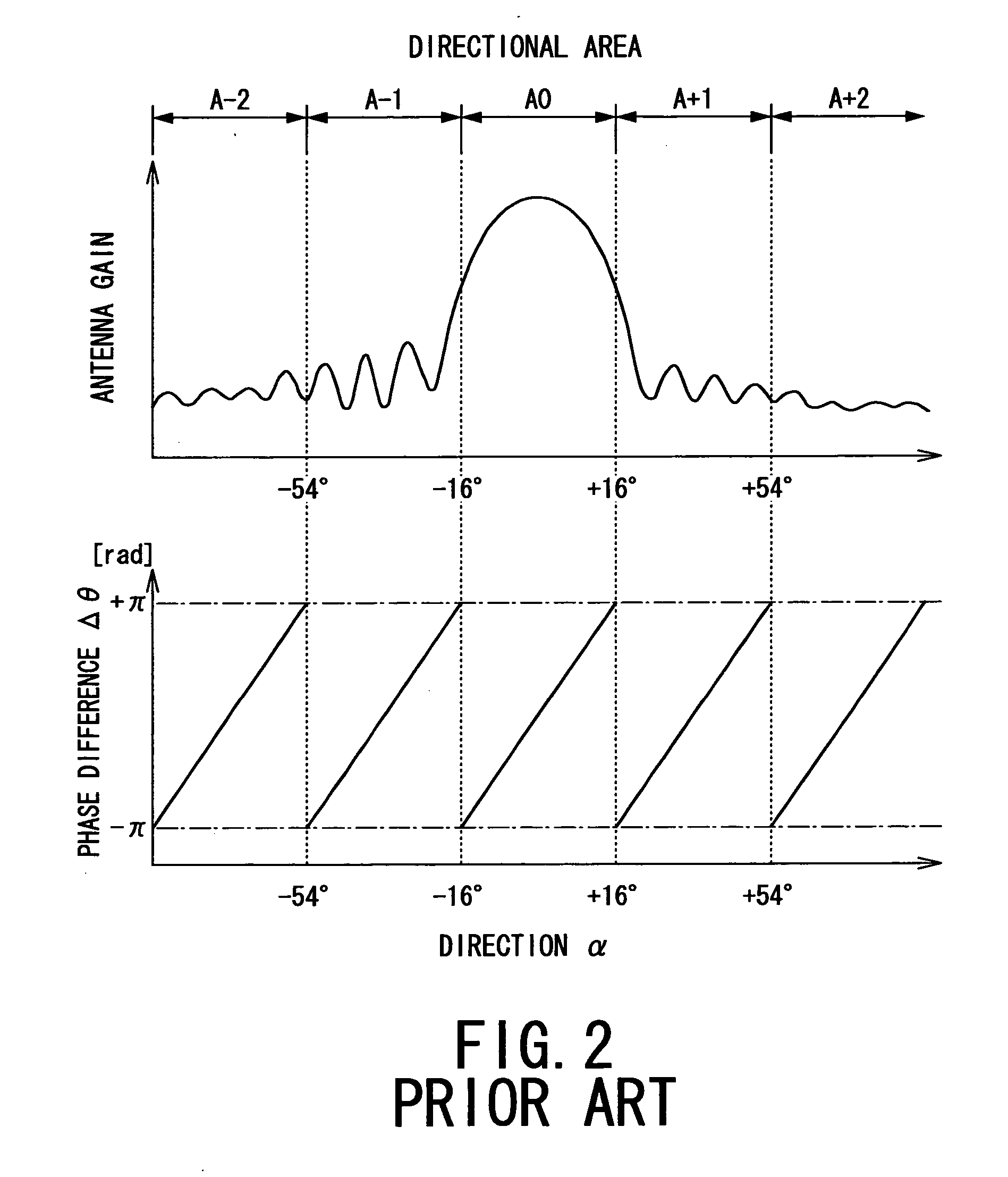Apparatus for detecting direction of target using difference in phase of radio wave signals received through plural channels
a radio wave signal and antenna technology, applied in the direction of using reradiation, measuring devices, instruments, etc., can solve the problems of incompleteness of the foregoing erroneous detection, inability to distinguish =sub>0/sub>, and inability to detect =sub>0/sub>, so as to prevent erroneous detection of targets
- Summary
- Abstract
- Description
- Claims
- Application Information
AI Technical Summary
Benefits of technology
Problems solved by technology
Method used
Image
Examples
first embodiment
[0036]FIG. 5 shows in block form the entire configuration of an on-vehicle radar apparatus 2 according to the first embodiment.
[0037] As shown in FIG. 1, the radar apparatus 2 is equipped with a transmitter 4, an N-channel receiver 6, an N-channel A / D converter unit 8, and a signal processor 10.
[0038] The transmitter 4 is constructed to a millimeter wave-band radar wave via a transmission antenna AS. The receiver 6 is coupled with N-piece reception antennas AR1 to ARN arranged in line at equal intervals (in this embodiment, N=8). And the receiver 6 receives, through the reception antennas AR1 to ARN, a radar wave (hereafter referred to as reflected wave) transmitted by the transmitter 4 and reflected from landmark objects (barriers), such as leading vehicles and roadside objects, and produces N-piece beat signals B1 to BN, which will be detailed later.
[0039] The A / D converter unit 8 has N-piece A / D converters AD1 to ADN respectively receiving the beat signals B1 to BN produced by...
second embodiment
[0065] Referring to FIGS. 7 to 9, a second embodiment of the present invention will now be described.
[0066]FIG. 7 is a block diagram showing the entire configuration of a radar apparatus 2a according to the second embodiment.
[0067] This radar apparatus 2a differs from that explained in the first embodiment in only part of both the configuration and signal processing carried out by the signal processor 10, so that the same or identical components of the radar apparatus 2a as or to the radar apparatus 2 are given the same references.
[0068] As shown in FIG. 7, in addition to the configurations of the radar apparatus 2 explained in the first embodiment, the radar apparatus 2a is provided with a CCD camera 16 capable of imaging an area wider than and including the directional area A0. Such a wider area ranges, for example, from −30 degrees to +30 degrees. The signal processor 10 is configured to perform target detecting processing to detect targets using digital data Di taken in throu...
PUM
 Login to View More
Login to View More Abstract
Description
Claims
Application Information
 Login to View More
Login to View More - R&D
- Intellectual Property
- Life Sciences
- Materials
- Tech Scout
- Unparalleled Data Quality
- Higher Quality Content
- 60% Fewer Hallucinations
Browse by: Latest US Patents, China's latest patents, Technical Efficacy Thesaurus, Application Domain, Technology Topic, Popular Technical Reports.
© 2025 PatSnap. All rights reserved.Legal|Privacy policy|Modern Slavery Act Transparency Statement|Sitemap|About US| Contact US: help@patsnap.com



